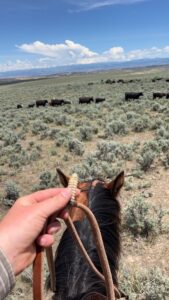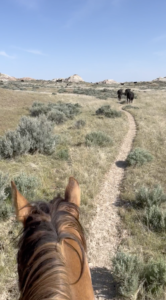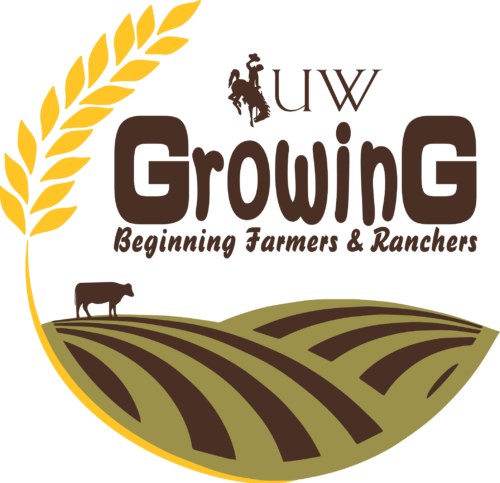Choosing Resources and Genetics
#bfrdpwy #aginternship #RightRisk

This week we started working on a watershed. A watershed collects rain or snow (becoming melted snow) which drain into a water body. The watershed we built drains into an underground tank. I had never heard of anything like this before until I was a part of it; I think it is a great practice that ranchers should use. We used an aluminum frame and secured it in the ground with rebar posts. Then we screwed each piece of metal down onto the aluminum frame. Once this was complete, we started cutting a two-inch slit into a ten-inch pipe that was connected into the underground tank.
The next few days we were hauling bulls and turning them out to cows and yearlings. This ranch calves in the spring so they turn their bulls out the week of June 1st, typically leaving them out for 90 days. One bull can breed 25 cows, and each ranch has their own criteria they look for to consider in a good bull. Important characteristics to look at when considering a bull are: calving ease, birthweight, pedigree, and this ranch also considers how docile they are. High strung bulls create high strong calves, for safety and production reasons it is important to consider a bull’s personality.

After we moved bulls, we moved a pasture of cows out of lower country and into higher country heading towards the mountains. The next day we moved yearlings into a pasture with better grazing. One thing that stuck to me was how different it is moving yearlings than moving pairs, and how much you need to adjust your attitude to each situation.
After this week I want to incorporate the use of a watershed in my future and think of new ways to conserve water instead of having to constantly drill for wells. This important practice of attempting to build ways to conserve water instead of constantly drilling for wells is a great practice for ranchers to consider ways they could save money. Similarly, it is very important to not take short cuts when buying bulls. Incorporating the different aspects of bulls to consider, as discussed previously, are imperative in overall herd health and production.
Questions that remain after this week are: what are some of the best methods to keep track of the heard, what is the most effective vaccine schedule, and what are the best supplements to give for herd health. Some things I would challenge are encouraging ranchers to brainstorm ways to converse water, instead of constantly drilling for wells.
Ideas that I want to continue on with what I have learned in this past week are brainstorming ideas to conserve water and ensuring each practice has their own adequate water supply. Furthermore, it is also important that I really do the research on bulls before buying them. Overall, this week was very educational with great learning opportunities.
See Chloe’s video here, Henderson_6_11_23_2
Submitted by: Chloe Henderson
Edits by: GrowinG Internship Team

